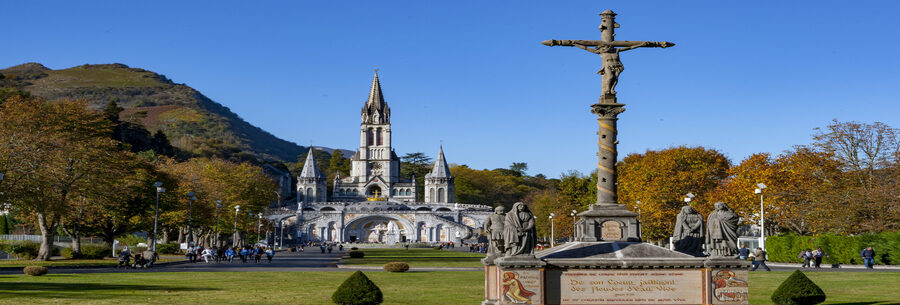Lourdes, a small town at the foot of the Pyrenees in France, is recognised as one of the world's leading Catholic pilgrimage sites. Since the Marian apparitions of the Virgin Mary to Bernadette Soubirous in 1858, Lourdes has become a symbol of hope and healing, attracting millions of pilgrims in search of miracles. This article explores the phenomenon of miracles at Lourdes, their significance and their impact on the faith of believers.
The origin of the miracles at Lourdes
The miracles at Lourdes are often associated with the apparitions of the Virgin Mary to Bernadette Soubirous. During these apparitions, the Virgin made promises of healing and encouraged prayer and penance. The first miracle recognised by the Church was Bernadette's cure of tuberculosis, and since then numerous testimonies of inexplicable cures have been reported by pilgrims.
The Lourdes Medical Bureau
To study and recognise cures, the Lourdes Medical Bureau was created in 1883. Made up of doctors and scientists, this office examines cases of healing reported by pilgrims. Healings must meet strict criteria, in particular medical inexplicability and speed of recovery. To date, around 70 cures have been officially recognised as miraculous by the Catholic Church.
The types of miracles reported
The miracles at Lourdes cover a wide range of medical cases, from chronic illnesses to physical disabilities. Among the most notable healings are people with cancer, multiple sclerosis, and other serious illnesses who experienced immediate and total healing after visiting Lourdes. Accounts of cures vary, but they often share a common thread: the pilgrims' deep faith and spiritual commitment.
The spiritual dimension of miracles
Miracles at Lourdes are not limited to physical cures. Many pilgrims report experiences of spiritual healing, a renewal of faith, and a deep sense of inner peace. Prayer, meditation and the rituals associated with the pilgrimage play an essential role in this spiritual dimension. For many believers, true healing lies not only in the absence of illness, but also in the ability to find comfort and hope in faith.
The impact of miracles on pilgrims
The miracles at Lourdes have a significant impact on the lives of pilgrims. They strengthen their faith, giving them tangible proof of God's love and of the Virgin Mary's intercession. These healing experiences also encourage pilgrims to share their stories and bear witness to the power of faith, creating a community of believers united by hope and love.
Science and faith
The phenomenon of miracles at Lourdes raises questions about the relationship between science and faith. While science seeks to explain cures by medical mechanisms, many believers consider these cures to be divine interventions. The debate between science and faith is complex, but it highlights the importance of miracles as manifestations of faith and human hope.
The miracles of Lourdes remain a fascinating phenomenon that attracts the attention of believers, researchers, and the general public. They embody hope, faith, and the search for healing, both physical and spiritual. For millions of pilgrims, Lourdes is a place where they can enjoy miraculous experiences, and each testimony of healing reinforces the legend of this sacred town. Lourdes thus remains an eternal symbol of hope and faith, a beacon of light for those seeking miracles in their lives.




















